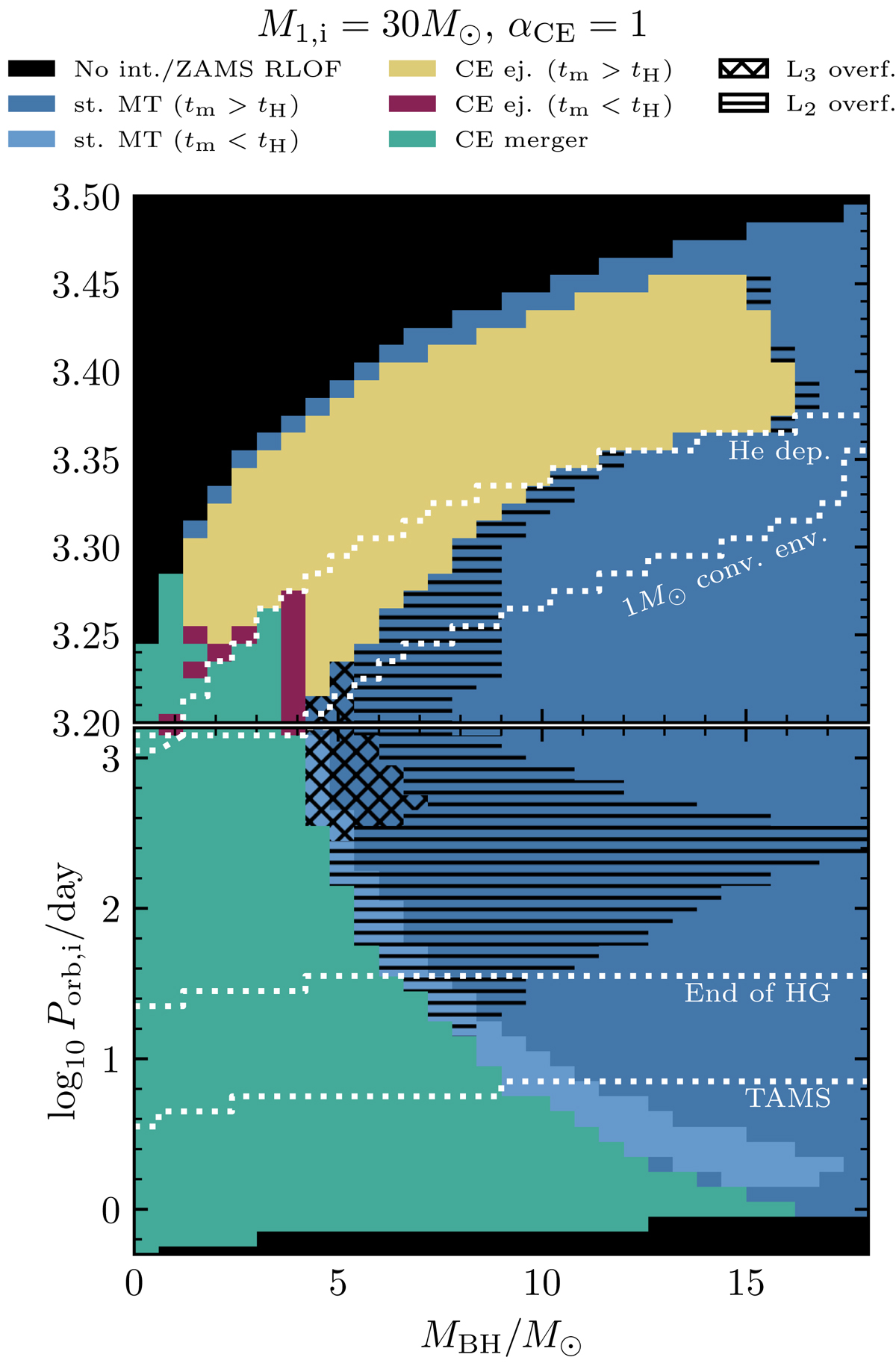Fig. 8.

Summary of final outcomes for simulations of circular binaries consisting of a BH and a 30 M⊙ star at a metallicity of Z⊙/10, and a CE efficiency parameter αCE = 1. Horizontal dotted lines indicate boundaries for an interaction before different evolutionary stages of the star. For systems that undergo stable MT, black horizontal lines indicate regions where the donor exceeded the L2 equipotential, while cross hatched regions mark regions where also the L3 equipotential is exceeded. Black rectangles indicate systems that do not interact or would result in a Roche lobe filling system at ZAMS. Systems that undergo stable MT or eject their envelope during CE evolution are denoted by “st. MT” and “CE ej.”, respectively, and they are separated into systems forming binary BHs that would merge in less or more than a Hubble time. Systems marked as “CE merger” merge during the CE phase.
Current usage metrics show cumulative count of Article Views (full-text article views including HTML views, PDF and ePub downloads, according to the available data) and Abstracts Views on Vision4Press platform.
Data correspond to usage on the plateform after 2015. The current usage metrics is available 48-96 hours after online publication and is updated daily on week days.
Initial download of the metrics may take a while.


